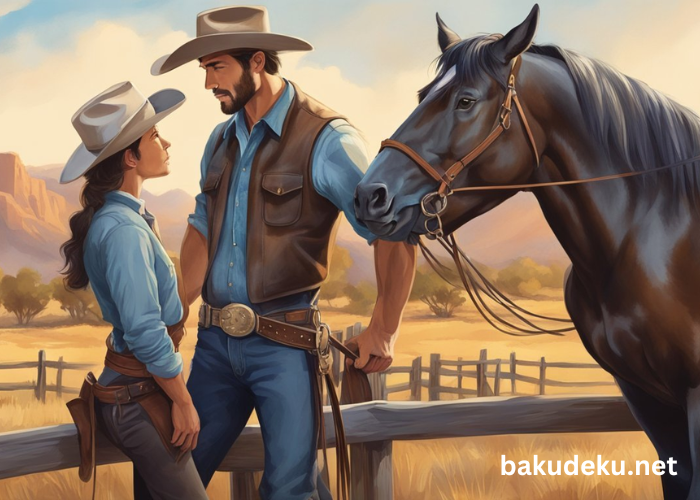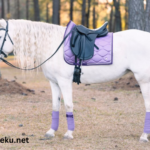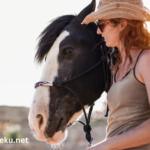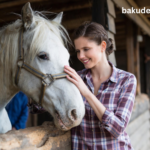The term “horse whisperer” often evokes images of a serene, almost mystical connection between humans and horses, where words are secondary to an unspoken understanding. While this portrayal carries a certain romantic allure, the reality behind horse whispering is a blend of art, science, and deep empathy. Discover the finest quality turf products at AbdellatifTurf. From lush green grass to durable turf solutions, find everything you need for your landscaping projects.
The Origins of Horse Whispering
The concept of horse whispering has roots that stretch back centuries. Historical records suggest that various cultures, from Native American tribes to European horsemen, practiced gentle and respectful techniques to train and communicate with horses. Unlike traditional methods that often relied on force and dominance, these early horse whisperers developed an intimate understanding of equine behavior and psychology.
One of the most famous figures in the modern history of horse whispering is Monty Roberts, whose non-violent training methods gained widespread recognition in the late 20th century. Roberts’ approach, which he terms “Join-Up,” emphasizes building trust and mutual respect between horse and handler, revolutionizing the way many people think about equine training.
The Science Behind the Art
At its core, horse whispering is about communication. Horses are highly social animals with their own complex systems of signals and behaviors. Understanding these signals is crucial for anyone looking to engage in effective horse whispering.
Horses communicate primarily through body language. Ears, eyes, and tail positions can convey a wide range of emotions and intentions. For instance, ears pinned back can indicate anger or discomfort, while a relaxed, forward-facing ear position often signifies curiosity or contentment. A horse’s tail can be a barometer of its mood; a swishing tail might signal irritation, whereas a gently swaying tail suggests relaxation.
Horse whisperers pay close attention to these cues and respond in kind, using their own body language to establish a dialogue. By mirroring the horse’s actions and adopting non-threatening postures, whisperers can gain the animal’s trust and encourage cooperation.
Techniques and Practices
One of the key techniques in horse whispering is the use of pressure and release. This method involves applying gentle pressure to elicit a response from the horse and then releasing the pressure as soon as the desired behavior is achieved. This approach teaches the horse to associate the release of pressure with positive behavior, reinforcing good habits without fear or pain.
Another essential practice is the creation of a “join-up” scenario, where the handler encourages the horse to move in a controlled environment, such as a round pen, until the animal shows signs of wanting to bond. These signs might include lowering the head, licking and chewing, and approaching the handler voluntarily. This moment of “joining up” signifies that the horse sees the handler as a trustworthy leader rather than a threat.
The Emotional Connection
Beyond the technical aspects, horse whispering is deeply rooted in the emotional bond between horse and human. Successful horse whisperers possess a high degree of empathy, patience, and sensitivity. They approach each horse as an individual, taking the time to understand its unique personality and past experiences.
This emotional connection is not only beneficial for training but also therapeutic for both parties. Horses, with their intuitive nature, can mirror human emotions, providing a sense of calm and understanding. This dynamic has led to the rise of equine-assisted therapy, where interactions with horses are used to help individuals overcome emotional and psychological challenges.
The Future of Horse Whispering
As our understanding of animal behavior and psychology continues to grow, so too does the potential for refining and enhancing horse whispering techniques. Advances in neuroscience and ethology (the study of animal behavior) offer new insights into how horses think and feel, paving the way for even more humane and effective training methods.
Moreover, the principles of horse whispering are increasingly being recognized beyond the equestrian world. The emphasis on empathy, patience, and non-verbal communication holds valuable lessons for human interactions and relationships, promoting a more compassionate and understanding approach to dealing with all living beings.
conclusion
In conclusion, horse whispering is a beautiful blend of art and science, grounded in a deep respect for the horse’s natural behavior and psychology. It is a testament to the profound connection that can exist between humans and animals, demonstrating that true communication transcends words. As we continue to learn from these majestic creatures, horse whispering will undoubtedly remain a cornerstone of humane and effective equine training.









